When it comes to hiking, choosing the right gear is essential to ensure a comfortable and safe experience. While many hikers focus on selecting the right shoes, backpack, and water bottle, one item that often gets overlooked is hiking pants. Hiking pants are specially designed to provide comfort, durability, and protection from the elements, making them a crucial piece of gear for any hiker.
So, do you need hiking pants? The answer is YES if you want to have a comfortable and enjoyable hiking experience. Hiking pants are designed to wick away moisture, dry quickly, and protect your legs from the sun, wind, and bugs. They are also durable and can withstand the wear and tear of hiking on rugged terrain. While some hikers may opt to wear shorts or regular pants, hiking pants provide added benefits that can make all the difference on the trail.
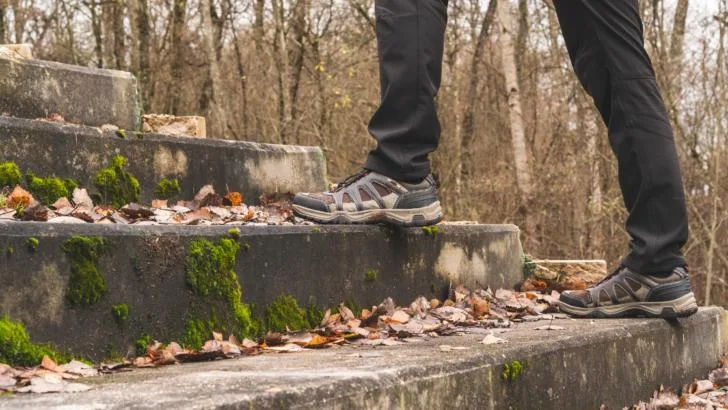
Key Takeaways:
- Hiking pants are an essential piece of gear for any hiker, providing comfort, durability, and protection from the elements.
- Hiking pants are designed to wick away moisture, dry quickly, and protect your legs from the sun, wind, and bugs.
- While some hikers may opt to wear shorts or regular pants, hiking pants provide added benefits that can make all the difference on the trail.
Why Hiking Pants?
As an avid hiker, I often get asked whether hiking pants are really necessary. The short answer is no, you don’t need hiking pants to go hiking. However, there are several reasons why you might want to consider investing in a pair.
Firstly, hiking pants are designed with durability in mind. When you’re out on the trail, you’re likely to encounter rough terrain, sharp rocks, and tree branches that can easily tear your clothing. Hiking pants are made from tough materials that can withstand these elements, protecting both your skin and your clothing from damage.
Another benefit of hiking pants is their lightweight and quick-drying nature. Regular pants can become heavy and uncomfortable when they get wet, which can happen easily when hiking through streams or in rainy weather. Hiking pants are made from materials that dry quickly, so you can stay comfortable even when you get wet.
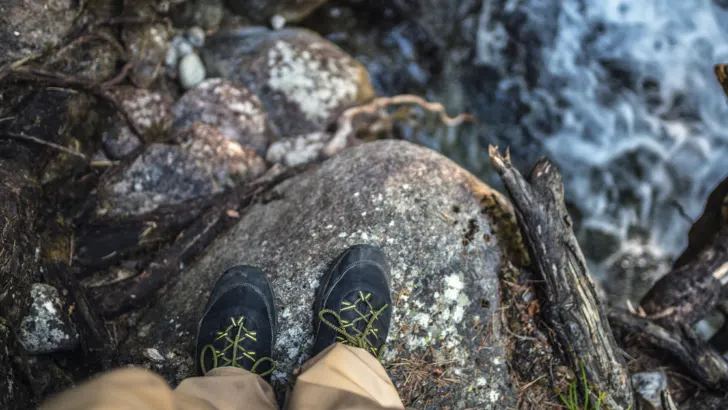
Hiking pants also provide additional insulation for your legs, which can be especially important when hiking in cold weather. While your torso may be well-insulated with layers of clothing, your legs often get neglected. Hiking pants can help to keep your legs warm and comfortable, even when the temperature drops.
Lastly, many hiking pants come with additional features that can be useful on the trail. For example, some pants have built-in insect repellent or UV protection, which can be particularly helpful in areas with high mosquito populations or strong sunlight.
In conclusion, while hiking pants are not strictly necessary for hiking, they do offer several benefits that can make your hiking experience more comfortable and enjoyable. If you’re serious about hiking and plan to do it regularly, investing in a good pair of hiking pants is definitely worth considering.
Related Posts:
The Pros and Cons of Hiking Pants
Pros
When it comes to hiking pants, there are several benefits that make them a popular choice among hikers. Here are some of the advantages of wearing hiking pants:
- Protection: Hiking pants offer better coverage and protection against various risks such as bug bites, poisonous plants and animals, rough terrain, and chafing. Some hiking pants come with light insulation, meaning you can wear them throughout the year.
- Comfort: Hiking pants are designed to be flexible and breathable, making them very comfortable to hike in. They are also designed to fit more loosely against the body, which allows for better movement and avoids any chafing.
- Versatility: Hiking pants come in a variety of styles and materials, making them suitable for different weather conditions and terrains. Some hiking pants are designed for warm weather, while others are insulated for colder weather.

Cons
While hiking pants have their advantages, there are also some drawbacks to consider before making the switch. Here are some of the disadvantages of wearing hiking pants:
- Warmth: Hiking pants can be too warm for hot weather conditions, causing you to sweat excessively. This can lead to discomfort and chafing.
- Weight: Some hiking pants can be heavy, which can be a disadvantage if you are trying to pack light for your hike. However, there are lightweight hiking pants available that can solve this problem.
- Cost: Hiking pants can be more expensive than other hiking attire such as shorts or leggings. However, the cost can be worth it for the added protection and comfort they provide.
Overall, hiking pants are a great choice for hiking in a variety of conditions. They offer protection, comfort, and versatility, making them a popular choice among hikers. However, it’s important to consider the potential drawbacks before making a purchase.
How to Choose the Right Hiking Pants
When it comes to hiking pants, there are many factors to consider. Here are some sub-sections to help you choose the right hiking pants for your next adventure.
Consider the Climate
The climate of your hiking destination should be one of the first things you consider when choosing hiking pants. If you’re hiking in a hot and humid climate, you’ll want pants that are lightweight and breathable. Look for pants made from moisture-wicking materials that will keep you cool and dry.
On the other hand, if you’re hiking in a colder climate, you’ll want pants that provide insulation and warmth. Look for pants made from thicker materials that will keep you warm in colder temperatures.
Consider the Terrain
The terrain you’ll be hiking on is another important factor to consider when choosing hiking pants. If you’ll be hiking on rocky terrain, you’ll want pants that are durable and abrasion-resistant. Look for pants made from materials like nylon or polyester that can withstand the wear and tear of rocky terrain.

If you’ll be hiking on wet terrain, you’ll want pants that are water-resistant or waterproof. Look for pants made from materials like Gore-Tex or other waterproof fabrics that will keep you dry in wet conditions.
Consider Your Personal Style
Finally, you should consider your personal style when choosing hiking pants. There are many different styles of hiking pants to choose from, including convertible pants, cargo pants, and leggings. Think about what style of pants you feel most comfortable in and what will be most practical for your hiking needs.
In summary, when choosing hiking pants, consider the climate, terrain, and your personal style. With these factors in mind, you’ll be able to choose the right hiking pants for your next adventure.
Studies That Have Looked at the Effects of Hiking Pants on Performance or Comfort
I did some research on the effects of hiking pants on performance and comfort during hiking. Here are some studies I found:
- A study published in the Journal of Sports Sciences found that wearing hiking pants with moisture-wicking properties can help keep hikers dry and comfortable during long hikes. The study also found that pants with a good fit and flexibility can improve mobility and reduce fatigue.
- Another study published in the International Journal of Industrial Ergonomics found that wearing hiking pants with reinforced knees and seats can reduce the risk of injury and improve overall performance during hiking. The study also found that pants with good ventilation can help regulate body temperature and reduce sweating.
- A third study published in the Journal of Outdoor Recreation and Tourism found that wearing hiking pants with multiple pockets can improve convenience and accessibility during hiking. The study also found that pants with good durability and resistance to abrasion can improve longevity and reduce the need for frequent replacements.

Based on these studies, it seems that hiking pants can have a positive impact on performance and comfort during hiking, especially if they have features such as moisture-wicking properties, reinforced knees and seats, good ventilation, multiple pockets, good fit, and flexibility.
Two Main Types of Hiking Pants: Synthetic and Natural Pros and Cons for Each
When it comes to hiking pants, there are two main types to consider: synthetic and natural. Each has its own set of pros and cons, so it’s important to choose the right type for your needs.
Synthetic Hiking Pants
Synthetic hiking pants are made from materials like nylon and polyester. These materials are known for their durability, moisture-wicking capabilities, and quick-drying properties. They’re also lightweight and easy to pack, making them a great choice for backpacking trips.
Pros
- Durable and long-lasting
- Moisture-wicking and quick-drying
- Lightweight and easy to pack
- Often have stretchy fabric for improved mobility
Cons
- Not as breathable as natural materials
- Can sometimes feel uncomfortable in hot weather
- Not as environmentally friendly as natural materials
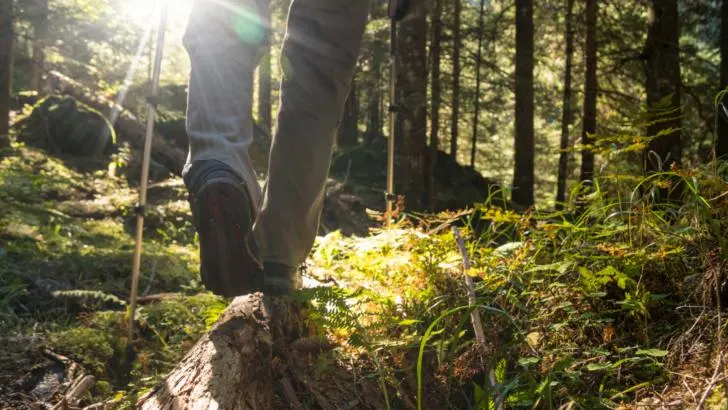
Natural Hiking Pants
Natural hiking pants are made from materials like cotton, wool, and hemp. These materials are known for their breathability and natural feel. They’re also more environmentally friendly than synthetic materials.
Pros
- Breathable and comfortable
- More environmentally friendly than synthetic materials
- Can be worn in a variety of weather conditions
Cons
- Not as durable as synthetic materials
- Not as moisture-wicking or quick-drying
- Can be heavier and bulkier than synthetic materials
When choosing between synthetic and natural hiking pants, it’s important to consider the climate and terrain you’ll be hiking in, as well as your personal preferences. If you’re looking for durability and quick-drying capabilities, synthetic materials may be the way to go. If you prioritize breathability and environmental friendliness, natural materials may be a better fit.
Tips for Caring for Hiking Pants
As someone who’s spent a lot of time hiking and backpacking, I know that taking care of your gear is essential. Here are some tips for caring for your hiking pants:
- Wash them properly: It’s important to follow the care instructions on your hiking pants. Most hiking pants can be machine washed, but some may require hand washing or air drying. Avoid using fabric softeners or bleach, as these can damage the fabric.
- Repair any damage: Hiking pants are designed to withstand rugged conditions, but they can still get damaged. If you notice any tears or holes, it’s important to repair them as soon as possible. You can use a patch kit or take them to a professional seamstress.
- Store them properly: When you’re not using your hiking pants, it’s important to store them properly. Make sure they’re clean and dry, and avoid storing them in direct sunlight or damp areas.
- Avoid wearing them for non-hiking activities: While hiking pants are designed to be durable, they’re not indestructible. Avoid wearing them for non-hiking activities, as this can cause unnecessary wear and tear.
- Consider investing in multiple pairs: If you hike frequently, it’s a good idea to invest in multiple pairs of hiking pants. This way, you can rotate them and give them time to rest between hikes.

By following these tips, you can help extend the life of your hiking pants and ensure that they continue to provide you with comfort and protection on the trail.
Wash Hiking Pants in Cold Water on a Gentle Cycle
When it comes to washing hiking pants, it’s important to follow the care instructions provided by the manufacturer. Most hiking pants are made from synthetic materials that require special care to maintain their quality and durability. Here are a few tips on how to wash your hiking pants properly.
First, always wash your hiking pants in cold water on a gentle cycle. This will help to prevent any damage to the fabric or stitching. Hot water can cause synthetic fibers to break down, which can lead to shrinkage and other issues.
Second, use a mild detergent that is specifically designed for synthetic fabrics. Avoid using fabric softeners or bleach, as these can also cause damage to the fabric. Instead, look for a detergent that is gentle and free of harsh chemicals.

Third, avoid washing your hiking pants with other items that might cause friction or damage to the fabric. For example, don’t wash your hiking pants with jeans or other heavy fabrics that might rub against synthetic fibers.
Fourth, always hang your hiking pants to dry. Avoid using a dryer, as the heat can cause shrinkage and damage to the fabric. Instead, hang your pants in a well-ventilated area and allow them to air dry completely before wearing them again.
By following these simple tips, you can help to extend the life of your hiking pants and keep them looking and feeling great. Remember to always check the care instructions provided by the manufacturer, as some hiking pants may require special care or treatment. With a little bit of care and attention, your hiking pants can last for many years of outdoor adventures.
Hang Dry Hiking Pants or Tumble Dry Them on Low Heat
When it comes to caring for my hiking pants, I prefer to hang dry them instead of tumble drying them on low heat. Hang drying is a gentler method that helps to preserve the pants’ fabric and prevent shrinkage.
However, if I’m in a rush and need my pants to dry quickly, I will tumble dry them on low heat. It’s important to note that high heat can damage the fabric, so it’s best to avoid using high heat settings.
If I do decide to tumble dry my hiking pants, I always make sure to turn them inside out first. This helps to protect the outer layer of the fabric from any potential damage.
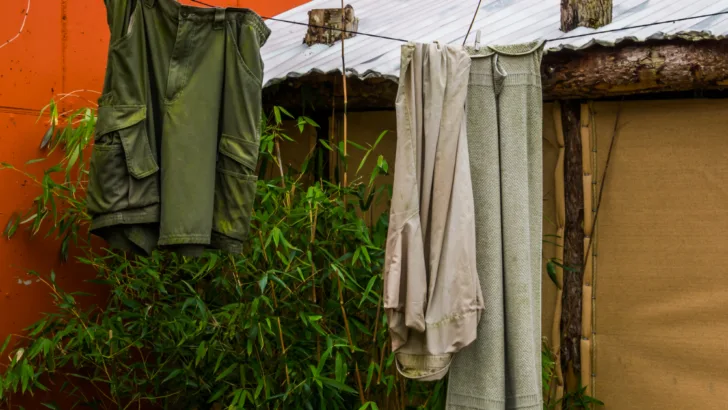
Another important consideration is the type of fabric your hiking pants are made from. Synthetic nylon and polyester fabrics are typically more durable and can withstand tumble drying better than natural fibers like cotton or wool. Always check the care label on your pants to see what the manufacturer recommends.
In summary, hang drying your hiking pants is the gentler option that can help to prolong the life of the fabric. However, if you’re in a hurry and need to dry them quickly, tumble dry on low heat is an option as long as you turn them inside out and avoid high heat settings.
Avoid Using Bleach or Fabric Softener on Hiking Pants
As someone who has been hiking for years, I have learned that taking care of your hiking gear is crucial to ensuring its longevity. One of the most common mistakes I see hikers make is using bleach or fabric softener on their hiking pants.
Bleach is a harsh chemical that can damage the fabric of your hiking pants. It can weaken the fibers and cause them to break down more quickly, leading to holes and tears. Additionally, bleach can cause discoloration, leaving your pants with unsightly white spots.
Fabric softener, on the other hand, can actually make your hiking pants less effective. The chemicals in fabric softener can clog the pores of the fabric, preventing it from wicking away moisture. This can make your pants less breathable and less comfortable to wear.

Instead of using bleach or fabric softener, opt for a gentle, fragrance-free detergent when washing your hiking pants. Look for a detergent that is specifically designed for outdoor gear, as these are formulated to remove dirt and sweat without damaging the fabric.
When it comes to drying your hiking pants, avoid using a high-heat setting. High heat can cause shrinkage and damage the fabric. Instead, opt for a low heat setting or air dry your pants.
By taking care of your hiking pants properly, you can ensure that they last for many hikes to come. Avoiding bleach and fabric softener is just one small step you can take toward keeping your gear in top condition.
Information About the Different Types of Hiking Pants Available
As an avid hiker, I know the importance of having the right gear for any outdoor adventure. When it comes to hiking, one of the most important pieces of gear is a good pair of hiking pants. There are three types of hiking pants available on the market, and each has its own unique features and benefits.
- Convertible Hiking Pants: Convertible hiking pants are one of the most popular types of hiking pants. They come with zip-off legs that can be removed to turn the pants into shorts, making them ideal for hiking in warm weather. They are also great for hikers who want to pack light, as they can easily switch between pants and shorts without carrying extra gear.
- Traditional Hiking Pants: Traditional hiking pants are designed to keep you warmer than shorts, and they protect your legs from bug bites, abrasion from rocks and thorns, rain, and exposure to the sun and wind. They are made from lightweight and stretchy nylon for mobility and protection from wet and windy weather.
- Softshell Hiking Pants: Softshell hiking pants are made from a combination of nylon and spandex or elastane, with a soft, brushed interior for added comfort. They are designed to be more flexible and breathable than traditional hiking pants, making them ideal for more strenuous hikes. They are also water-resistant and wind-resistant, making them a great choice for hiking in inclement weather.
When choosing the right type of hiking pants, it’s important to consider the weather conditions, the length and difficulty of the hike, and your personal preferences. By understanding the different types of hiking pants available, you can choose the right pair for your next outdoor adventure.
Conclusion
In my experience, hiking pants are a must-have for any serious hiker. They offer comfort, durability, and protection from the elements that regular pants just can’t match.
When choosing a pair of hiking pants, it’s important to consider factors like fit, material, and features. Look for pants that are lightweight, breathable, and moisture-wicking to keep you comfortable on long hikes. Also, consider pants with reinforced knees for added durability.
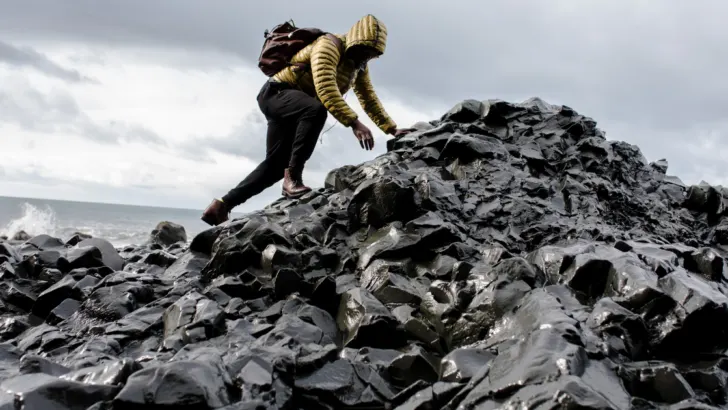
It’s worth investing in a quality pair of hiking pants that will last you for many hikes to come. While they may be more expensive than regular pants, the added comfort and protection they provide make them well worth the investment.
Overall, if you’re serious about hiking, I highly recommend investing in a quality pair of hiking pants. They’ll keep you comfortable, protected, and ready for any trail that comes your way.
Frequently Asked Questions
What are the benefits of wearing hiking pants?
Hiking pants are specifically designed for outdoor activities and offer several benefits over regular pants. They are made of durable, lightweight, and breathable materials that provide better comfort and flexibility while hiking. They also have reinforced seams and panels that can withstand abrasions and tears from rugged terrain. Additionally, hiking pants often have pockets and loops for carrying essentials like maps, compasses, and water bottles.
Are hiking pants more durable than regular pants?
Yes, hiking pants are generally more durable than regular pants. They are made of synthetic materials like nylon and polyester, which are tougher and more resistant to wear and tear. Hiking pants also have reinforced seams and panels that can withstand abrasions and tears from rugged terrain. This durability makes them ideal for outdoor activities like hiking, camping, and climbing.
What features should I look for in hiking pants?
When choosing hiking pants, look for features like moisture-wicking, quick drying, and breathable fabrics. You should also consider the fit and comfort, as well as the durability and flexibility of the materials. Other features to look for include reinforced seams and panels, adjustable waistbands, and pockets for carrying essentials.
Do hiking pants provide better protection from the elements than leggings?
Yes, hiking pants provide better protection from the elements than leggings. They are made of thicker, more durable materials than leggings, which can protect against scratches, scrapes, and other hazards on the trail. Hiking pants are also designed to be water-resistant or waterproof, which can keep you dry in wet conditions. Leggings, on the other hand, are typically made of thinner, more lightweight materials that offer less protection.
What are the advantages of Columbia hiking pants?
Columbia hiking pants are known for their durability, comfort, and functionality. They are made of high-quality materials that are designed to withstand rugged terrain and harsh weather conditions. Columbia hiking pants also have features like moisture-wicking, quick-drying, and breathable fabrics, as well as reinforced seams and panels for added durability. Additionally, they come in a variety of styles and colors to suit different preferences.
Are hiking pants worth the investment?
Yes, hiking pants are worth the investment if you plan on doing any outdoor activities like hiking, camping, or climbing. They are designed to be durable, comfortable, and functional, which can make your outdoor experience more enjoyable and safe. While they may cost more than regular pants, the benefits they provide make them a worthwhile investment for outdoor enthusiasts.
